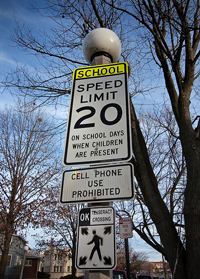
Source: Three Teens on a Wall, JPott, Flickr
Arguments can begin in many ways, but sometimes they begin with a statement of perspective or opinion on the part of the writer who suggests an idea or plan be considered or accepted. In other words, the writer offers a proposition to the reader, claiming perhaps that something is true (for example, dogs make better pets than cats) or that someone should do something (for example, Americans should adopt a vegetarian lifestyle).
A strong argument is supported with reasons and evidence designed to convince the reader to come to the same conclusion as the writer (that dogs make better pets than cats or that Americans should adopt a vegetarian lifestyle). Conclusions may be based on two types of reasoning, or methods of structuring an argument logically: inductive reasoning and deductive reasoning.
Inductive Reasoning
Here’s how inductive reasoning works. You notice that every time you eat a hot dog with chili and onions, you get indigestion.

Source: Chili Dog @ Village Bowling Lanes, ross.grady, Flickr


Source: I’m so sick - and I don’t mean the Urban Dictionary definition of “sick” :( #newsfromthecube #nftc, slworking2, Flickr
You come to the logical conclusion that you should avoid hot dogs with chili and onions in order to avoid indigestion.

Source: FBI, NYPD Crime Scene, wwward0, Flickr
Inductive reasoning, also called informal or everyday logic, is a process of making observations and drawing probable conclusions based on those observations. For example, detectives at a crime scene may observe a broken window and conclude that the burglar’s method of entry was through that window. They may notice that the only item missing from the scene is a valuable painting and assume that the burglary was not random. Whoever broke in knew exactly what he was after: the painting. Inference, therefore, forms the basis of inductive reasoning. The detectives’ conclusions are reasonable given what they have observed.

Source: Póster Anatomía de Star Wars para Enter.Co, alejoserrano, Flickr

Source: Shrek 2, Mark Morgan Trinidad B, Flickr

Source: Spiderman 3, Santosh Dawara, Flickr
Now, consider the following example of inductive reasoning. Pay attention to how a generalization, a type of conclusion, can be made from considering specific observations.
Specific observation # 1: The original Star Wars movie is the sixth largest moneymaker of all time.
Specific observation # 2: The number one movie at the box office in 2004 was Shrek 2.
Specific observation # 3: Spiderman broke many box office records in 2002.
Generalization: Science fiction and fantasy films do very well at the box office.
Note: To avoid an error in logic known as the hasty generalization, a conclusion based on insufficient evidence, make sure you include enough accurate examples to prove your point.
Keep in mind that an inductive argument can only demonstrate that the conclusion is probably true.

Source: Ping Bag, frank foehlinger, Flickr
Specific observation: Tonya is seen walking from her car to her home with a set of golf clubs.
Specific observation: Tonya’s husband, Jack, loves golf, and tomorrow is his birthday.
General conclusion: Tonya has bought the set of golf clubs for Jack.
The example of inductive reasoning is dependent on human observation. The probability is good that the clubs are a gift for Jack. However, the possibility also exists that Tonya may have taken up golf herself.
Deductive Reasoning
Deductive reasoning is the opposite of inductive reasoning.
| INDUCTIVE | DEDUCTIVE |
|---|---|
| Specific Observations | General Conclusion |
 |
 |
| General Conclusion | Specific Observations |
In deductive reasoning, the argument starts with a general conclusion and then examines examples to reach a specific observation.
General conclusion: Drivers who use their cell phones in a school zone will be ticketed.
Example: Tom used his cell phone in a school zone.
Specific observation: Tom got a ticket.

Source: Warp Zone, Tau Zero, Flickr
The example above takes the form of a syllogism, or a form of a deductive argument that consists of a major premise (general), minor premise (related fact), and a conclusion (based on the major and minor premises). Here’s the example again with new labels.
Major premise: Drivers who use their cell phones in a school zone will be ticketed.
Minor premise: A policeman was present in the school zone when Tom used his cell phone.
Conclusion: Therefore, Tom got a ticket.
When you reason deductively, you can say therefore with certainty if your facts are firm from the beginning.

Source: Which Way?, EricMagnuson, Flickr
Think you can tell the difference between inductive and deductive reasoning? In the exercise that follows, you will identify each line of reasoning as inductive or deductive. Remember that inductive reasoning moves from the specific to the general, while deductive reasoning moves from the general to the specific.

Solid reasoning may take the form of inductive or deductive reasoning, important tools that have been used throughout history. Keep in mind the following when you create arguments.
-

Source: Fun in the sun: HMH-366 takes families to kids camp, CherryPoint, Flickr
The deductive argument works best when you have strong major and minor premises (often known as examples). The conclusion or observation then validly follows from those premises, as shown below.
Major premise or known fact: All swimmers are in the water.
Minor premise or known fact: John is swimming.
Conclusion: Therefore, John is in the water.
-

Source: Jvm 00, Nohemio, Wikimedia
The inductive method is effective when you have access to lots of particular, specific pieces of evidence that you believe will demonstrate a general point, or conclusion, as shown in the example below.
Specific evidence: Candidate X served as mayor of Dallas before being elected to the Texas State House of Representatives.
Specific evidence: She was then elected to the United States Senate, where she chaired the Foreign Affairs Committee for six years.
Specific evidence: The president then appointed Candidate X as ambassador to Mexico.
General point or conclusion: Given her successful performance in elected and appointed positions and her experience with foreign affairs, the party should nominate her for president.